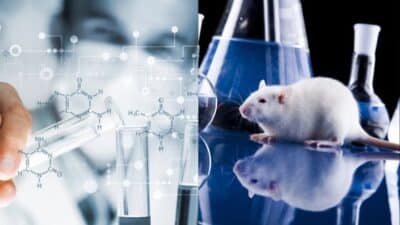
In the intricate and high-stakes world of drug discovery, the Hit-to-Lead (H2L) phase is one of the most critical steps. It’s here—between the spark of a promising “hit” and the emergence of a viable “lead compound”—that the future of a potential drug is decided.
But while this stage offers immense scientific opportunity, it’s also fraught with challenges. Many promising molecules are discarded at this point, not because they lack initial activity, but because they fail to meet the complex criteria required to become true drug candidates.
So what exactly makes or breaks a compound during hit to lead optimization? Let’s explore the key hurdles researchers face—and why so few molecules make it through.
1. Biological Potency Isn’t Enough

A molecule that shows early activity against a biological target may seem like a winner—but raw potency is just the beginning. During H2L, researchers must enhance and fine-tune this activity to ensure that the compound:
- Binds tightly and selectively to the desired target
- Maintains activity in physiologically relevant conditions
- Doesn’t lose effectiveness across similar biological environments
Even a highly potent hit can be sidelined if it lacks selectivity, causes off-target effects, or shows inconsistent results in different assays.
2. Poor ADMET Properties

One of the biggest reasons hits fail to become leads is unfavorable ADMET (Absorption, Distribution, Metabolism, Excretion, and Toxicity) profiles.
A compound might work brilliantly in vitro, but if it’s poorly absorbed, rapidly broken down by the liver, or toxic to healthy cells, it won’t make it far in development.
Common ADMET pitfalls include:
- Low solubility, limiting bioavailability
- Fast metabolism, reducing therapeutic window
- Cytotoxicity, especially in off-target tissues
- Accumulation, leading to potential long-term harm
The challenge is finding a balance—modifying the molecule to improve its pharmacokinetics without losing its biological effect.
3. Synthetic Complexity and Scalability

A molecule may be chemically fascinating but synthetically impractical. If a compound requires 20+ steps to synthesize, uses rare reagents, or has unstable intermediates, it becomes difficult (and costly) to scale up for further testing or manufacturing.
During hit-to-lead, chemists must assess:
- Can the compound be synthesized quickly and reliably?
- Are the starting materials accessible and affordable?
- Will the compound remain stable during storage and transport?
If the answer to any of these is no, the molecule may be deprioritized—even if it shows promising biological activity.
4. Selectivity and Off-Target Effects

Selectivity is essential. A drug candidate that affects multiple pathways might cause harmful side effects, especially if it interacts with essential proteins unrelated to the disease target.
For example, a kinase inhibitor that hits the wrong kinase might disrupt cell division in healthy tissue, leading to toxicity. During H2L, researchers must refine the compound’s structure to increase precision—minimizing unintended consequences.
5. Intellectual Property and Redundancy

Even if a compound performs well, it may not be commercially viable if:
- It overlaps structurally with patented drugs
- It’s similar to existing therapies already in development
- It lacks novelty or competitive advantage
A hit that can’t be protected or differentiated might not justify further investment. Patentability, freedom to operate, and market potential are real business factors that affect scientific decisions.
6. Time and Resource Constraints

Drug discovery is expensive and time-sensitive. Companies can’t afford to optimize every hit. The H2L process often involves prioritizing 3–10 top hits for further study out of hundreds.
This forces hard decisions—sometimes abandoning molecules with potential simply because others offer quicker paths to development. Scientific value isn’t the only variable; logistics, funding, and project timelines play major roles.
Overcoming the Challenges: A Modern Approach
To reduce the high attrition rate in H2L, drug developers are now leveraging:
- AI and machine learning for predicting ADMET and off-target risks
- Automated synthesis to rapidly produce analogs
- High-content screening to gather deeper biological data earlier
- Computational modeling for better selectivity and target affinity predictions
These tools help accelerate decision-making, reduce costs, and improve the chances of identifying high-quality lead compounds.
Final Thoughts
The Hit-to-Lead phase is where science meets strategy—and where most molecules are left behind. It’s a phase defined not just by discovery, but by rigorous testing, tough calls, and smart optimization.
A drug candidate can fail for many reasons: poor bioavailability, unexpected toxicity, unstable chemistry, or simply being too similar to what’s already out there. But when a compound survives the gauntlet of H2L, it enters the next phase of drug development with real promise.
In the race to find the next breakthrough therapy, H2L isn’t just a filter—it’s a forge.
- 0shares
- Facebook0
- Pinterest0
- Twitter0



